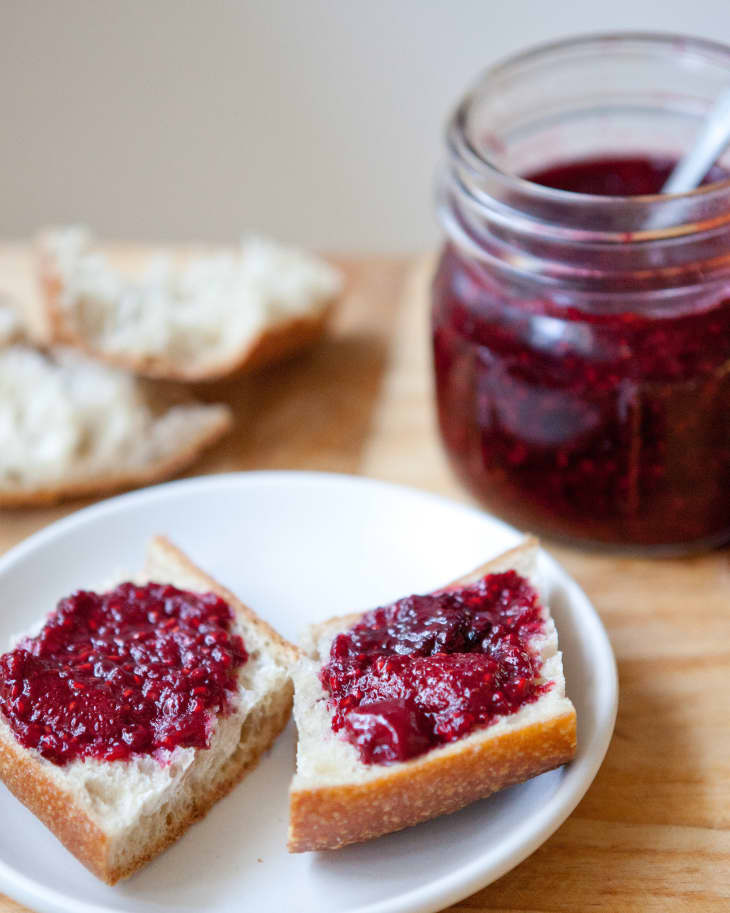What’s The Difference Between Jam, Jelly, Conserves, Marmalade, & Fruit Spreads?
Have you ever wondered what the difference is between all the soft fruit spreads? Are jelly and jam the same thing? And what the heck is a gelée? In this post, we’ll explain the differences.
Jam Advice You Probably Need
How To Make Strawberry Thyme Jam, As Told By Cats
- Bacon Jam Is Never Not a Good Idea.
- Why Strawberry Jam and Cucumber Pickles Are the Worst Ways to Start Canning
Jam
Jam is a thick mixture of fruit, pectin, and sugar that is boiled gently but quickly until the fruit is soft and has an organic shape, yet is still thick enough that it spreads easily and can form a blob. In addition to being a spread, jams are also good for fillings.
Jelly
Jelly is made from sugar, pectin, acid, and fruit juice and is a clear spread that is firm enough to hold its shape. Jellies can also be made from ingredients other than fruit, such as herbs, tea, wine, liqueurs, flowers, and vegetables.
Marmalade
Marmalade is a citrus spread made from the peel and pulp of the fruit. Marmalades are cooked for a long time and have no pectin, and are used as spreads and glazes.
Preserves
Preserves are spreads that have chunks of fruit surrounded by jelly.
Fruit Butter
Fruit butter is a smooth and creamy spread that is created by slow-cooking fruit and sugar until it reaches the right consistency; these types of spreads are not always translucent and are often opaque. Fruit butters are best used as a spread and a filling.
Conserves
Conserves are made with dried fruits and nuts and are cooked. They have a very thick and chunky texture. Conserves work very well as a spread and as a condiment for meats and cheeses.
So, what’s a gelée? It’s just the French word for “jelly.”
